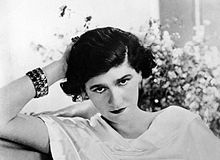Eugène Schueller graduated from France’s nationwide chemical engineering school Ecole Nationale Supérieure de Chimie de Paris in 1904 and went on to produce the business that will later end up being L’Oréal, Société Française des Teintures Inoffensives put Cheveux, on 30th July 1909.
As a young chemist in 1907, Schueller shows his skill for originality by producing his very first hair color solutions under the name Oréal, utilizing a mix of safe chemical substances. The dyes are an impressive advancement for the time, offering a refined variety of colors in contrast to other techniques available in the marketplace, which utilize henna or mineral salts which produced a brilliant, but rather synthetic appearance. Schueller declared a patent (n ° 383920) on 24th March 1908 for his new formulations.
With the war over, a brand-new age starts. All over the world, ladies are working, making money, growing more worried about their looks and looking for beauty therapy methods to avoid grey hairs from exposing their age as well as new makeup products to stop them looking their age. Oréal hair dyes are an excellent solution, even beyond the borders of France, breaking brand-new ground in Italy in 1910, Austria in 1911 and the Netherlands in 1913, even reaching as far afield as Canada, the UK, the United States, and Brazil
In 1909, Eugène Schueller, a young chemist with an entrepreneurial spirit, established the business that was to end up being the L’Oréal group. All of it started with among the very first hair dyes that he created, made and offered to Parisian hair stylists. With this, the creator of the group created the very first link in what is still the DNA of L’Oréal: research study and development in the service of beauty.
Through his determination and passion, Eugène Schueller prospers in persuading Paris hairstylist to utilize his dyes. Schueller is overflowing with concepts for the brand-new business and develops agents to offer his items throughout France. He likewise establishes a hair-coloring school on Rue du Louvre in Paris, which he personally manages, making use of a previous hairstylist from the Russian Court to show his ideas. He very quickly understood that his success is connected to that of hairstylist, he set out to create a unique relationship with the most influential stylist at the time, which grew more powerful every day.
